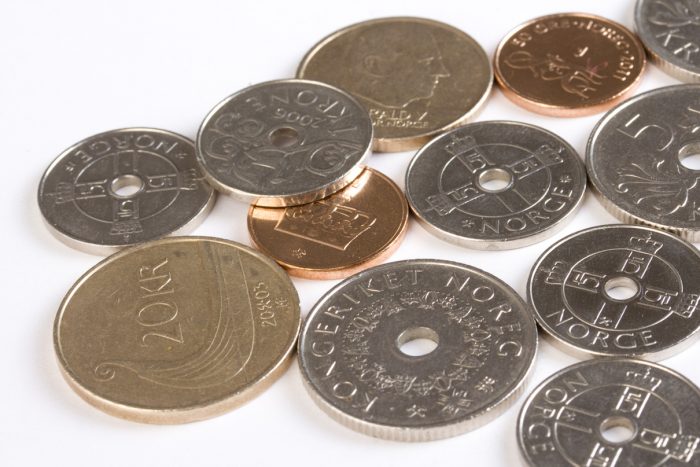Norway may be best known for its picturesque landscapes and long winters. However, it also serves as a hub for shipping, oil and various financial services.
Since the financial crisis of 07/08, the country’s banking sector has undergone significant changes pertaining to credit levels and loan issuance.
Some of the highest growth has taken place within the “forbrukslån” segment of the industry. The term is a portmanteau of the words “forbruk” and “lån”, which when combined translates to consumer loan.
An important factor has been the introduction of a new customer ID verification tool, called bankid. It allows banks to verify a customer’s identity externally, which in turn allows the holder to sign legal documents online.
Tapping a newfound market
Around 2008, newly incorporated banks began to more aggressively pursue customers in need of non-collateralized credit lines. The product (forbrukslån) had existed for years, but the market had until then been dominated by a limited number of banking conglomerates.
These specialist banks chose to specifically target the consumer loan segment, attacking the market from two angles:
- Marketing: Norwegian media suddenly witnessed an influx of commercials for unsecured credit offers, flooding both television and online channels.
- BankID: The introduction of electronic signatures allowed consumers to apply for, as well as sign loan agreements without having to visit their bank’s premises.
How BankID works
Norway has put substantial effort into developing e-verification methods, which simplifies communication between its residents and various public/private services. BankID was first put into use by Norwegian banks in 2008, allowing customers to securely log into online banking portals.
The computer chip resembles a small calculator, producing a “verification code” upon request, often called 2-FA (Two factor authorization) in English-speaking countries.
BankID utilizes a 3-tier verification method. It combines the chip’s code with the user’s Social Security number and a private password.
From a legal standpoint, e-signatures with BankID are considered binding, equal to a physical signature made with pen and paper.
When juxtaposed to other nations, the difference is stark. That includes the US, where most payments are still processed with the help of checks, cashiers and the ACH network.

Easy access leads to high growth
By 2007/2008, the consumer lending industry had already been well established. However, only a handful of lenders had put serious effort into expanding their customer bases. Yearly growth numbers serves as a good illustration of what ensued.
Between the years of 2009 and 2016, the Norwegian forbrukslån industry notched yearly growth numbers in excess of 10%, consecutively. Some years, including 2013 and 2016, saw growth levels exceed 15%.
When the dust settled, Norwegians had become one of the largets consumers of non-collateralized financing, on a per capita basis, worldwide.
Norway’s Central Bank (Norges Bank) issued a report in 2015, with detailed findings. One key metric was the relationship between interest expenditures and debt levels. The report indicated that consumer loans made up a small portion of total Norwegian debt, but ate up approximately x4 the amount of interest expenditure.
In other words, interest charges associated with unsecured credit lines far exceeded that of other loans, including mortgages and car loans.
According to the Norwegian lending site forbrukslån.no, a typical forbrukslån carries an API between 7% and 45%, with some loans exceeding 250%.
Signs of a slowdown
Around 2017/2018, some banks began to report higher losses on their portfolios. Default rates jumped from around 4% to 7.5% over a two-year span, leading to increased scrutiny and calls for tighter regulation. By year 2020, that number had increased to almost 10%.
Meanwhile, Norwegian consumer loan providers chose to aggressively expand within other European countries, using the EEA agreement as leverage to gain market access. Their focus was especially aimed at countries such as Finland, Germany and Denmark.
In turn, this expansion has led to discontent among competing European banks. A key criticism pertains to the “loss guarantee” (known as FDIC in the US) offered by Norwegian banks, which far exceeds that of their European counterparts.
Within the EU, bank accounts are shielded from losses up to a total amount of 100,000 euros. Yet, if a customer opens an account within a branch operated by a Norwegian bank, their losses are covered for up to 250,000 euros.
This has led to a capital influx benefiting Norwegian lenders. Moreover, it allows them to lend out more money, at high interest rates, using their customers checking account balances as leverage.
The Norwegian parliament (Storting) has introduced regulations meant to curb this practice, as a means to placate its European counterparts.
Norwegian banks face tougher regulations
Furthermore, the Norwegian government began expressing concern with the increased debt levels, and whether consumers were capable of handling their consumer debt.
The financial regulatory agency (Finanstilsynet) instituted new rules, meant to curb growth, while creating a framework for more responsible lending practices:
- Maximum down payment time was reduced from 15 to 5 years, excluding refinancing products.
- Max debt to income ratios were tightened, with a cap set at 500 percent.
- Banks were instructed to perform theoretical “stress tests”, to see if a customer could handle an increase in interest rates of at least 4%.
- Banks were no longer allowed to market loans with terms such as easy, quick, same day, same minute, etc.
The new regulations have already bore fruit, with growth levels decreasing to 10% in 2018. In 2019, the numbers had dropped even further, to a meager 0.25%. That is the most significant drop witnessed in almost 10 years.
Find a Home-Based Business to Start-Up >>> Hundreds of Business Listings.

















































